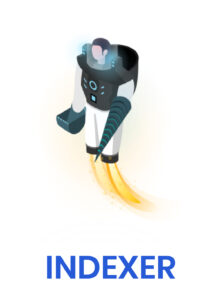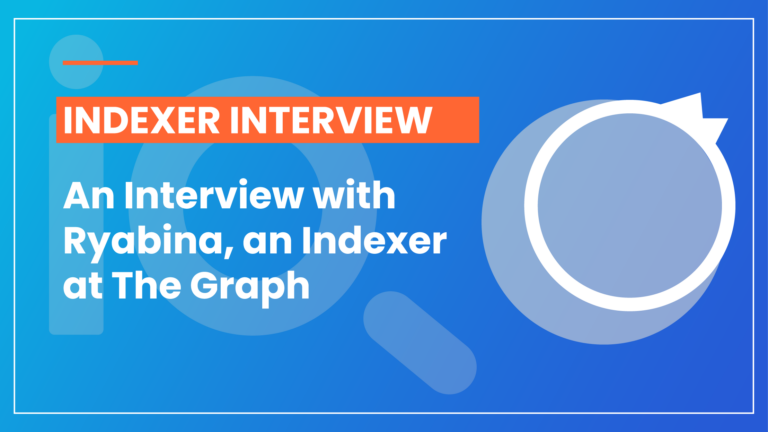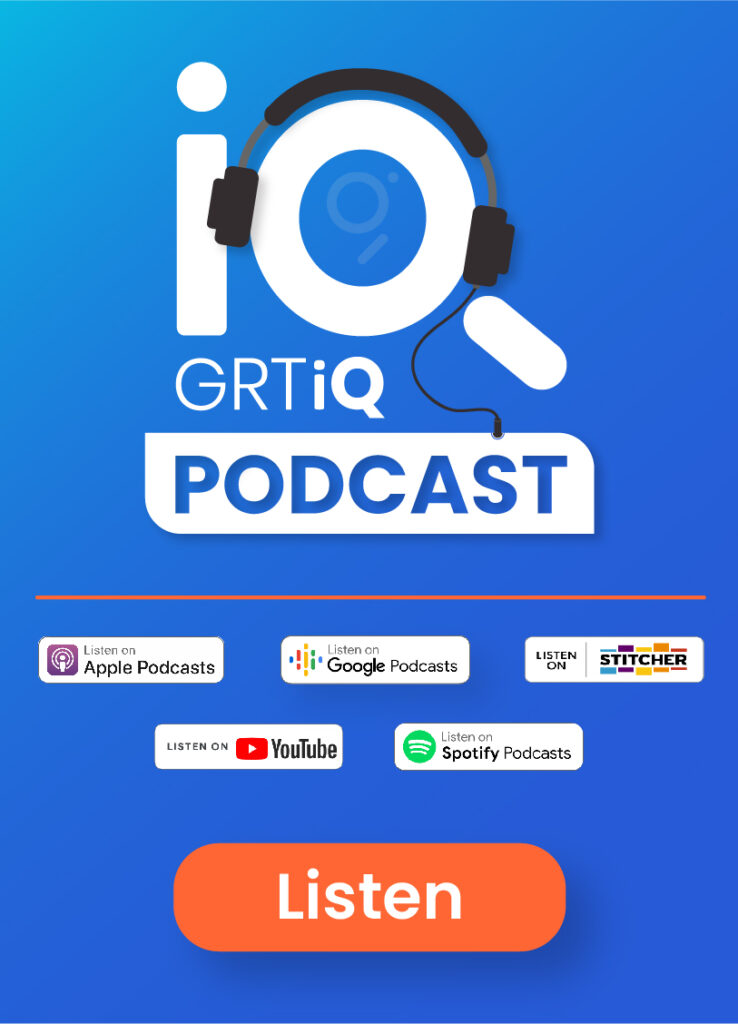We interviewed the team at Ryabina, an Indexer at The Graph, and the creators of the very popular GRT Delegator rewards and Indexer dashboard – graphscan.io.
Within the Delegator community, graphscan.io was adopted very early as the go-to dashboard to evaluate Indexer partnerships and to track GRT rewards earnings. The dashboard was created by the team at Ryabina, an active Indexer that operates four different Indexer IDs at The Graph – first, second, third, and fourth.
The Ryabina team refers to themselves as “validators of awesome networks,” which includes names like The Graph, Polkadot, Celo, Kava, Band, Edgeware, and many more.
We interview the team at Ryabina (Twitter and Medium) to better understand how they approach the role of being an Indexer at The Graph and to get the inside scoop on their dashboard.

GRTiQ: How do you describe the work Ryabina does as a validator and where does the name Ryabina come from?
Ryabina: Our team was formed in 2017, and we started validating activities in 2019 with the launch of our validator on the Kusama network. It’s hard to believe, but two years ago, there were very few reliable PoS projects, but we were lucky enough to be at the beginning of the boom of PoS networks.
Today validators are able to choose those projects in which they are interested in working and in whose future they believe. This is our approach – to choose the awesome networks in which we want to invest our time and energy.
Our favorites are substrate-based and we always pay a lot of attention to the Polkadot ecosystem. Nevertheless, we have been following The Graph with great interest, even before the testnet launch, and we are putting a lot of effort into The Graph during the testnet and in the mainnet.
Despite the fact that we are a multinational team, our team language is primarily Russian. Ryabina in Russian means “rowan berry.” There’s a lot of symbolism in it and we’ll write more about it someday.
GRTiQ: How do you describe the role of being an Indexer?
Ryabina: An Indexer — and this is Ryabina’s role in The Graph — is a node operator in The Graph Network. We stake GRT (Graph Tokens) to provide indexing and query processing services and earn query fees and indexers rewards. Our objective here is to select subgraphs to index based on the subgraph’s curation signal, where Curators stake GRT in order to indicate which subgraphs are worth being indexed.
Three features that are important to a good Indexer are team, experience, and expertise.
Delegators in The Graph delegate stake to Indexers to contribute to securing the network. When delegating to Indexers, Delegators earn a part of query fees and rewards, earned by the Indexer they chose.
GRTiQ: How would you describe the daily work activities associated with being an Indexer?
Ryabina: An Indexer’s work can be divided into several modules:
- Maintenance and improvements of current infrastructure;
- Monitoring, tests, and updates;
- Research, the building of business logic, and development of strategies;
- Delegator support activities: technical support, answering questions, learning, etc.
- Additional product development: in our case, they are Graphscan.io and Telegram bot (in progress) for The Graph Network.
GRTiQ: Some Indexers, like yourselves, have multiple Indexer profiles on The Graph Network. Can you explain why an Indexer would have more than one profile?
Ryabina: Although we cannot answer for other Indexers, we can tell you about our own reasoning.
Due to the perfect score during the testnet, Ryabina managed to earn the trust of a large part of the Delegator community and, as a result, our delegation capacity was exhausted very quickly. That is why we decided to offer “Indexer-to-Indexer” services, where Ryabina hosts and maintains Indexer infrastructure for other stakeholders. And this is why you see ryabina.eth Indexer, as well as cp0x hosted by Ryabina and makingcash Indexer hosted by Ryabina. Providing these services lets us improve our scalability while our partners can earn more.
GRTiQ: You have created a very popular data dashboard, graphscan.io. What was the motivation for creating that resource? Do you feel like there is any competition between the various creators of data dashboards within The Graph community?
Ryabina: As you might know, we have a Telegram group, where our team members answer questions from The Graph community. When Delegators delegate to us, they are placing trust in us – so we feel a responsibility to help them sort out issues or concerns they may encounter during the staking process.
When it became possible to delegate GRT and earn the rewards, the most frequently asked questions were about the staking process itself, staking APR, reward cuts, reward calculations, and so forth.
We wrote several “How to” guides, but it obviously wasn’t enough to make the delegating process easier and more clear, so the next step was to make the initial dashboard including reward calculations, Indexers’ allocations, effective reward cuts percentages, realized rewards, subgraphs, Tokenlock contracts owners, and so on. Additionally, we were the first to create a solution to delegate vested GRT. All this was done with enthusiasm and excitement based on the great launch of the network. And now we are working on a large update of graphscan.io, aiming to bring more useful features and improve the user experience.
In terms of competition, we believe that the more teams involved in developing products for the network, the better.
GRTiQ: One data point in your dashboard that gets a lot of interest is the annual percentage yields (APYs) of Indexers. For example, you have a field for “Current est. APY” and then another for “Calc. est. APY.” Can you explain how you arrive at these figures?
Ryabina: Let’s start by saying that we’re talking about APR. APY, or annual percentage yield, takes into account compound interest, but APR, which stands for annual percentage rate, does not. You can read more about the difference here.
The formulas behind the calculations are as follows:
Allocation Daily Rewards (ADR)

Total Indexer Allocations Daily Reward (TADR) is equal to the sum of the daily rewards of all the Indexer allocations:

Current Indexer APR:

To calculate the APR with Potential Delegation (PD), we take this delegation into the delegation pool proportionally for all allocations and the ADR formula looks like this:

GRTiQ: How would you advise Delegators to go about selecting an Indexer?
Ryabina: We definitely recommend using graphscan.io to conduct this type of research: its basic function is to sort Indexers according to their statistics (e.g., effective cut %, est. rewards, etc.), so Delegators can evaluate important data and find the staking conditions they are looking for.
Besides this, the dashboard allows users to track the following: the allocation strategy of Indexers; periodicity and regularity of rewards closings; re-open allocations; historical records of rewards cut percent changes in charts, as well as statistics related to Curators and Delegators; and new subgraphs. And there will be more useful and practical functionality after the upcoming upgrade.
GRTiQ: How would you describe the competition, if any, between Indexers?
Ryabina: The Graph Network is in the early stage now and there is no real competition between Indexers. For the moment, it all comes down to an Indexer’s reputation, pricing, and promotion through social networks.
But when new subgraphs are added, then the difference in the performance of Indexers will be stronger, and hence the potential GRT earnings of the Delegators.
GRTiQ: How would you describe the importance of a committed and educated Delegator Community to The Graph and, more specifically, to Indexers?
Ryabina: Many of our Delegators are well aware of how the network works and they provide us with valuable feedback and ideas. Graphscan.io, along with other upcoming projects, was largely inspired by our Delegators. So, we are happy to be a part of the community that is committed to each other.
GRTiQ: Your website lists a lot of different partners, including Polkadot and Celo. This means you probably have a unique perspective for the role The Graph plays, or will play in the future, within the entire industry. Given this perspective, how would you describe the role The Graph plays in the industry – currently and into the future?
Ryabina: With regards to Web3, we – figuratively speaking – have to complete the giant puzzle, which includes a large variety of projects interacting with each other. Obviously, The Graph is one of the most important pieces of this puzzle.
The Graph optimizes data acquisition from any supported source making it possible to efficiently query blockchain data without relying on a centralized service provider. Beginning from the Ethereum and IPFS, The Graph has recently announced support to the Polkadot, NEAR, Solana, and Celo Layer-1 (L1) blockchains, opening Web3 opportunities to a wider ecosystem, thus making data flow truly decentralized and development-friendly. Instant access to searchable indexes of blockchain data will allow developers to search, find, publish, and use the public data they need to work with the decentralized applications (dApps), without relying on centralized servers.
The Graph is a game-changer in the industry, it is a necessary and significant part of the whole Web3 platform. It supports different L1 blockchains, attracting developers with various skills to contribute to The Graph ecosystem, thus expanding, improving, and becoming more robust and strong.
GRTiQ: What sort of challenges does The Graph face that the Delegator Community should be aware of?
Ryabina: With regards to The Graph, we see the following as potential challenges:
- The transition from an initial phase of the network to a constantly growing system, with a growing community.
- Switching current subgraphs to public Indexers. Many Delegators and Indexers will have to rethink their strategies – this can even cause some significant issues.
However, we are on the same page with Delegators and we hope for a bright future for the project!
GRTiQ: What’s the next big thing the Delegator Community should be watching for regarding The Graph?
Ryabina: What we are most anxiously waiting for is the start of Curation. Curators are subgraph developers – data consumers or community members who signal to Indexers which subgraphs (APIs) should be indexed by The Graph Network.
Competent Curators will play an important role in The Graph ecosystem and will bring more unique and new ways of the interaction of people in the internet of the future.
And what else? Substrate-based projects integration!
WANT MORE?
Receive New Content
Direct to Your Inbox
DISCLOSURE: GRTIQ is not affiliated, associated, authorized, endorsed by, or in any other way connected with The Graph, or any of its subsidiaries or affiliates. This material has been prepared for information purposes only, and it is not intended to provide, and should not be relied upon for, tax, legal, financial, or investment advice. The content for this material is developed from sources believed to be providing accurate information. The Graph token holders should do their own research regarding individual Indexers and the risks, including objectives, charges, and expenses, associated with the purchase of GRT or the delegation of GRT.
©GRTIQ.com

